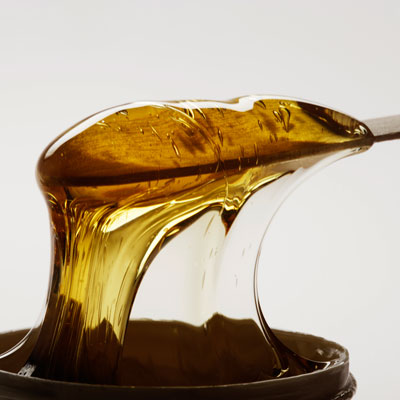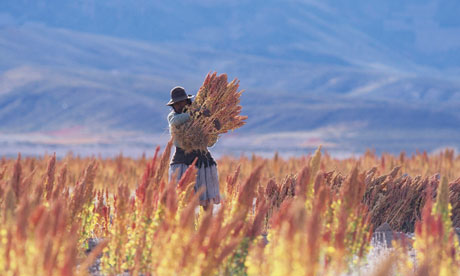Parents talk about chemicals: Worry is everywhere, but we
‘begged’ for convenience
By Tim Skillern | The Lookout – 17 hrs ago
Richard Carriero and his wife, Carrie. (Photo
courtesy of Richard Carriero)
“As a child,” Richard Carriero says, “I
was oblivious.”
He did all the “dangerous” things as a
kid: drank from the garden hose, ate
junky processed treats and played
with any plastic toy put in front of
him.
“I didn't know any better and neither
did my parents,” Carriero, 33, says.
But Carriero later learned about
chemicals—especially Bisphenol A,
better known as BPA, a compound used in plastics that some say causes health problems—and horror stories about
Superfund sites like Love Canal in Niagara Falls, N.Y. As an adult, Carriero says he sees the world with increasing suspicion:
“Power lines, tap water, aluminum cans and Styrofoam all became sources of danger.”
Now Carriero and his wife, Carrie, are expecting their first child. Before that, he says, their conversion to a less-chemicalladen and natural lifestyle started when Carrie was diagnosed with a benign tumor last year.
Cancer threatened, so their lives changed. Now organic-food converts, they shop exclusively at Whole Foods and farmers
markets in their hometown of Boulder, Colo. A local dairy delivers their milk.
“As our baby grows, he or she will develop the disagreeable habit of putting everything in his or her mouth,” he says. They
will limit exposure to plastics. Organic fibers will replace synthetics in clothing and bedding. “We're even looking into cloth
diapers, though we're not sure whether or not we have the courage.”
Carriero is one of many parents (or, in his case, an expectant one) who wrote stories today for Yahoo News about their supervigilance in the face of a chemical-saturated life—one shared by billions and brought again to light by a United Nationssponsored report that found that man-made chemicals in everyday objects are likely the cause of some cancers, psychiatric
disorders and birth defects.
Here are excerpts from a few first-person perspectives that parents wrote today:
Prudence, not fear, is key
The U.N. report is no shocker to Marilisa Sachteleben, a Michigan mom with 25 years’ experience raising two girls and two
boys.
“Am I paranoid and terrified by the findings? No,” Sachteleben, of Grand Haven, writes. “We live in a chemical-drenched
DDIISSCCOOVVEERR YYAAHHOOOO!!
WWIITTHH YYOOUURR
FFRRIIEENNDDSS
Login
YAHOO! NEWS2/20/13 Parents talkabout chemicals: Worry is everywhere, but we ‘begged’ for convenience | The Lookout - Yahoo! News
news.yahoo.com/blogs/lookout/parents-talk-chemicals-worry-everywhere-begged-convenience-004842630.html 2/3
Vin Zant’s two older children, Torsten, 4, and
Rafe, 3. (Courtesy of Unwirklich Vin Zant)
society. It would be impossible to avoid them all.”
Sachteleben, a special-needs teacher and health writer, has been following news about phthalate and BPA for years. Her
children (now 24, 22, 20 and 14) were breastfed and never given bottles, and she avoided plastic teething rings. They did,
however, use sipper cups, the oft-fingered villain in toddlers’ plastic-filled world.
“I wish I'd realized how dangerous plastic was then,” she says. “If I was parenting little ones now, I'd definitely look for
products made without phthalates or BPA.”
Her avoidance of plastics continues today. She writes: “To prevent ingestion, I've quit serving foods in plastic. I use fewer
plastic disposables and opt for paper over plastic. I look for lunch containers that are BPA-free. I serve fewer foods from
cans. I buy metal water bottles. On the rare occasions when we drink from plastic bottles, I don't refrigerate them. I
microwave less and don't heat on Styrofoam or plastic. This helps prevent plastic chemicals from leaching into food or
beverages.”
Chemicals are a concern, but convenience is still king
As a parent, Emily Harmon takes the good with the bad. Balancing chemicals and kids is no different.
The 34-year-old suburban Cincinnati mom of two—a boy, 6, and a girl, 2—says she worries about their social and intellectual
development and their overall safety and well-being.
But she says she wants them “to experience bumps and bruises, disappointment, failure, and the occasional cold. I'm a pretty
laid-back mom when it comes to the health of my children.”
The U.N. report does make her more concerned, again flaming fears she and her husband have talked about for years:
cancers, birth defects, fertility problems, autism and more.
“There must be a reason, in this modern era of medical science, for the marked increase [in problems],” she writes. Her
family already avoids plastics, uses stainless steel water bottles and eats from non-plastic containers. Still, her daughter uses
a sippy cup, her son plays with plastic toys and they eat on plastic plates.
“Will I change further with these new findings? Yes, when convenient,” Harmon says. “I will look for food products packaged
in glass containers and will avoid drinking from plastic, when convenient. I will look for an alternative to my daughter's
plastic sippy cups and start utilizing ceramic plates for the kids. Will I do a total lifestyle change to avoid [everyday
chemicals]? No. Do I hope the government investigates regulations to help everyone better avoid these toxins? Absolutely.”
Can’t always bet on organic
Chemicals are everywhere—even in remote Sterling, Alaska, with its population of
5,617.
“We found it impossible to avoid man-made chemicals,” Unwirklich Vin Zant, a
27-year-old mother of three boys, writes. “Modern living just does not allow
parents to [do] so. It's on and in our walls. It's in our food. It's in our clothes and
mattresses. It's in our soap and shampoo. Heck, it's in our dirt.”
Vin Zant says she can’t imagine the toll chemicals have taken on her body. And
she’s worried her sons—4, 2 and 4 months—will undoubtedly see more exposure.
So, even when she and her husband were childless, they started unburdening
themselves of man-made compounds as much as possible. They grow their own
food in greenhouses and in a heated in-house grow room. They read labels for
concerns, eschewing products and food with additives and synthetics. They even
researched the soil near potential houses, deciding to buy “way out in the boonies
where the footprint of humanity was smaller.”2/20/13 Parents talkabout chemicals: Worry is everywhere, but we ‘begged’ for convenience | The Lookout - Yahoo! News
news.yahoo.com/blogs/lookout/parents-talk-chemicals-worry-everywhere-begged-convenience-004842630.html 3/3
“It's scary,” Vin Zant says. “It really is scary to think that against one of the largest threats to our children outside of global
warming and war, we have no adequate defense.”
She says her family doesn’t always bet on organic products really being free of chemicals, “thanks to the trendiness of
organics,” she says. So, even though it’s often expensive, they try to make as much of their own food and wares.
The worst thing?
“We begged for it,” she says. “We begged for it with every new, shiny, and more convenient lifestyle we sought.”
Read more stories from parents concerned about chemicals in their lives:
Choosing natural products, giving my kids a healthier future
Easy access to hazardous chemicals leads to natural solutions
Availability of green products not an issue; price is
Parents must shop smarter to avoid chemicals
Asthma, allergies, eczema and the link to my daughter’s health
UN report simply confirms my concerns
Study must be considered, but paranoia should be avoided
From toothpaste to makeup to foods, avoiding chemicals in our home
How we fought Asperger's by changing diet and environment
Wary of chemicals since first pregnant






